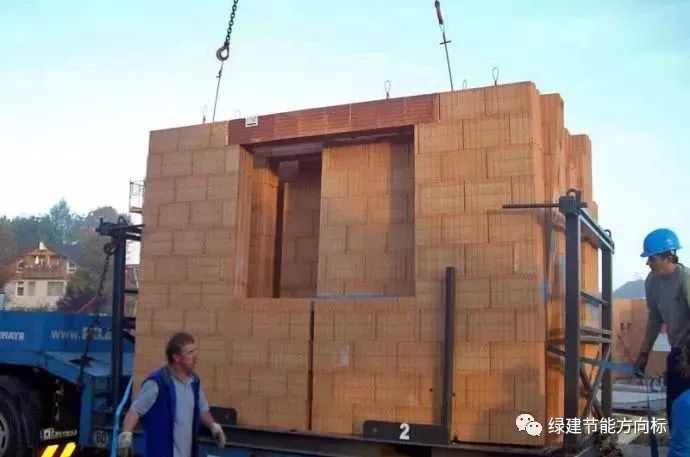From the early stage, we should consider the function and effect of each space after the building is landed, such as line of sight, light, path, interface, etc.
After completion, it is quite messy.
The project is a spiral glass exhibition pavilion, which rises from the ground on the slope.
Only when the effect, space and function of the building are clearly considered in advance, can it be called an excellent architectural design.
For example, the Seattle library built by OMA, many people think its shape is so strange.
Before, many designers ignored architectural details in order to pursue the so-called “sense of art”, Greatly reduce the overall quality of the building.
At the end of the article, a collection of the world’s top architectural detail magazines is attached.
So far, it has also become one of the most successful professional journals in architecture and engineering details in the world.
▲ Norwegian whale watching cultural center / dorte mandrup remembers the architect Smith Fan Drow once said, “no matter how magnificent your architectural design scheme is, if you don’t grasp the details in place, you can’t call it a good work.” In his words, “detail is God”! ▲ Smith Fan “Details” in the eyes of European architects speaking of European architects, our first impression is that they are thoughtful and logical.
In fact, in addition to thinking about architectural functions, Koolhaas also considered the problems of light and interface.
At the entrance, a transverse trapezoidal space is enclosed by an inclined plane in order to provide citizens with a shelter from rain.
▲ Spiral Clock Museum / big’s grasp of architectural space.
Even if you look inside the building, it gives people a sense of dilapidation.
In their eyes, details are mainly reflected in three aspects: the integration of art and technology.
In addition, they also pay special attention to architectural details.
It also includes scale, materials, local culture, people’s use, fit with the surrounding environment and so on ▲ architectural details ▲ consideration of scale and space ▲ consideration of the details of the building and the surrounding environment is more like a “responsible attitude”.
▲ staggered floor design of internal space – Seattle library / OMA + LMN ▲ inclined glass facade ▲ rain shelter space at the entrance – Seattle library / OMA + LMN is designed for people.
▲ why does Seattle library / OMA + LMN Koolhaas divide the internal space into several staggered independent function blocks and make the glass curtain wall inclined is actually to have better natural light.
For architects, design should not only pay attention to the appearance of the building, but also pay attention to its interior – that is, details.
Engineering design consultation, architectural design, municipal roads, fire protection renovation, interior design, scientific research budget, architectural design, municipalroads, fire protection renovation, interior design, scientific research budget ▲ Lize SOHO / Zaha Hadid Architects “emphasizing art over technology, emphasizing macro and neglecting detail” has always been a common problem of “Chinese style” architecture.
At the early stage of design, we should think about every possible problem.
Do you know why? Because when your hands are full of things, this kind of spherical handle can’t be opened with your arms! ▲ the “inside opening” window ▲ will never use the spherical door handle to prepare for a rainy day.
With the continuous improvement of public taste, this “superficial” building has been abandoned, Lose the opportunity to compete with peers.
They advocate that the architectural design should meet people’s functional needs, create more practical space, and integrate more ergonomics into the design.
It is how to integrate the complex architectural functional attributes, limiting conditions and aesthetics, and express them through modern methods.
How much do European architects value details? In addition to passing on this “concept of detail” to generations of designers through college education, the European construction industry has also set up a special journal, which sends professionals to collect high-quality construction projects from all over the world every month, and summarizes the ideas and methods of these architectural details through a large number of research and analysis, so as to improve the design level of the whole construction industry.
▲ the China Pavilion of Expo Milano is inspired by the “wheat waves” in the field, but not only does it not reflect the wheat waves after completion, but also it is full of a sense of chaos if you look closely ▲ Hefei art museum wants to build an urban landmark building in Hefei.
Details are a “responsible attitude”.
When talking about details, many people think of the structure of the building, how to be horizontal and vertical, and how to fit tightly However, it is far more than that.
In Europe, you will find that many residential windows are opened inward because it is convenient to clean the glass; Even a door handle can’t be made into a ball.
Big makes the perfect integration of technology and art, so that this precious “art” can be landed.
▲ Spiral Clock Museum / big, for example, the spiral clock Museum of big.
Even on Douban, I got an ultra-high evaluation of 8.9 points! What can you learn from it? For those of us who are still engaged in the construction industry, we can learn about the details and process of the latest landing buildings from this journal..
Among them, the most test for designers is to let the curved glass act as the load-bearing structure, and it is the first time to achieve this height, which requires the high cooperation of the design team and the engineering team to create such a masterpiece.




